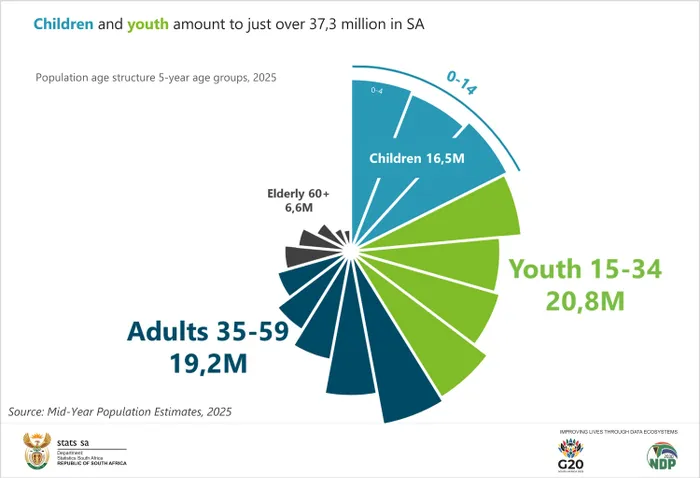Why fewer young South Africans in the workforce won't solve the youth unemployment crisis

In many sectors, particularly construction, infrastructure, and logistics, demand for specialised, high-risk or niche skills far outpaces local availability.
Image: Henk Kruger/Independent Newspapers
Despite the number of young people aged 15 to 24 joining the labour market being expected to decrease over the next decade, structural barriers such as a lack of skills among young South Africans, limited job creation, and slow economic growth continue to impede progress.
As a result, a shrinking youth population does not automatically translate into improved youth unemployment rates or ease the pressures on the economy and society.
According to Statistics South Africa’s 2025 mid-year population estimates, the country’s total population stands at 63.1 million. Population growth has stabilised at around 1.23% annually, below pre-pandemic levels, driven by declining mortality and a rebound in positive net migration following COVID-19, the agency’s figures show.
According to the latest Quarterly Labour Force Survey (QLFS) it shows that 41.7 million South Africans are currently of working age. The working-age population, defined as those aged 15 to 64, grew by about 1% between mid-2024 and mid-2025, adding roughly 400,000 individuals, based on data from Statistics South Africa and the OECD.
Young people aged 15 to 34 make up about half of this group. Within this segment, those aged 15 to 24 face the highest barriers to employment, with unemployment rates far exceeding those of older youth. Over the past decade, youth unemployment has climbed sharply, from 36.9% in early 2015 to 46.1% in 2025, according to the QLFS.
“Youth unemployment remains one of South Africa’s most pressing challenges,” Statistics South Africa has said.
While these labour market pressures mount, South Africa’s demographic profile is shifting. Statistics South Africa’s mid-year population estimates show that about 82% of the population is Black African, around 8% identify as coloured, 7% as white, and 3% as Indian or Asian. Women slightly outnumber men, making up 51% of the total population.
At the same time, the number of young people entering the workforce is falling. Statistics South Africa’s data shows that the number of children aged 0 to 14 has declined by 4.6% in a single year, dropping from roughly 17.3 million in 2024 to 16.5 million in 2025. This trend aligns with a continuing drop in South Africa’s crude birth rate, now at 17.8 births per 1,000 people in 2025.
Statistics South Africa further reports that improvements in infant and child survival rates have partially offset these declines. Infant mortality has dropped from 61.9 deaths per 1,000 live births in 2002 to 23.1 in 2025, and the under-five mortality rate has fallen similarly. Yet, total fertility has steadily declined from 2.78 children per woman in 2008 to 2.21 in 2025, meaning that future cohorts of working-age youth will continue to shrink.

Children under the age of 15 make up about 26,2% of South Africa’s population — an estimated 16,5 million people. Meanwhile, around 10,5% of the population, or 6,6 million people, are aged 60 and older.
Image: Stats SA
Taken in combination, although there are fewer young people entering the workforce, which could reduce the total number of unemployed youth, it does not guarantee a drop in youth unemployment rates or resolve structural employment issues. Persistent challenges such as mismatched skills, limited job opportunities, and economic stagnation continue to block young people’s access to employment.
Moreover, slower growth in the working-age population will place greater pressure on economic growth and productivity. Based on Statistics South Africa’s data, we can surmise that, with an ageing population, a shrinking youth base means fewer people will contribute to the labour market, while an increasing share of elderly dependents will require support.
Provincially, Statistics South Africa shows that Gauteng remains the most populous province, housing about 25.5% of the national population, followed by KwaZulu-Natal. Limpopo and the Eastern Cape have the highest proportions of children under 15, respectively, while the Northern Cape has the smallest share of the population.
Fewer young South Africans entering the workforce should not be mistaken for an easing of youth employment challenges. As Statistics South Africa’s data make clear, the structural barriers remain and may be exacerbated by demographic shifts. Policymakers must prioritise sustainable economic opportunities and inclusive labour market interventions to secure a prosperous future for the country’s youth.
IOL
Related Topics: